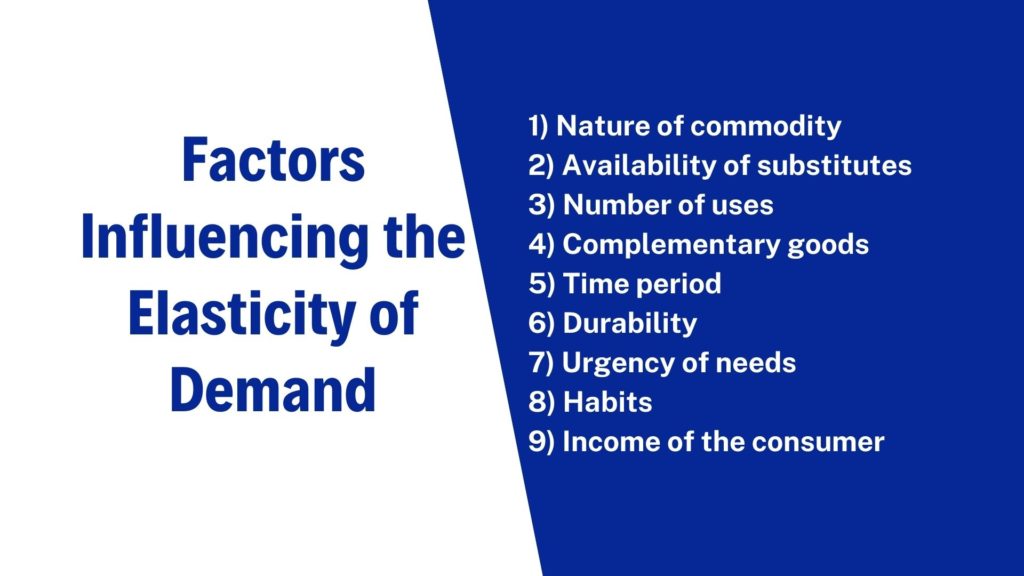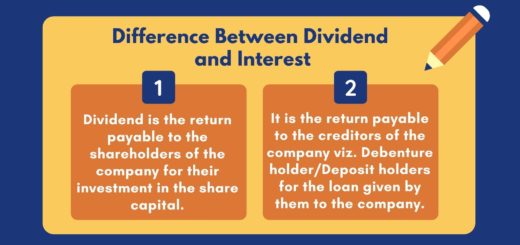9 Factors Influencing the Elasticity of Demand | Free Economic Blogs
Table of Contents
Factors Influencing the Elasticity of Demand

Concept of Elasticity of Demand
The term elasticity indicates the responsiveness of one variable to a change in the other variable. The elasticity of demand refers to the degree of responsiveness of quantity demanded to a change in its price or any other factor.
According to Prof. Marshall, “Elasticity of demand is great or small according to the amount demanded which rises much or little for a given fall in price and quantity demanded falls much or little for a given rise in price.”
- Microeconomic Definition | Historical Review of Microeconomics
- Scope Or Nature of Microeconomics
- Features of Microeconomics
- Importance of Microeconomics
Factors Influencing the Elasticity of Demand
The elasticity of demand depends upon several factors which are discussed below
1) Nature of commodity
By nature, we can classify commodities as necessaries, comforts, and luxury goods. Demand for necessaries like foodgrains, medicines, textbooks, etc. is relatively inelastic and for comforts and luxury goods like cars, perfumes, furniture, etc. demand is relatively elastic.
2) Availability of substitutes
Demand for a commodity will be more elastic if its close substitutes are available in the market. For example, lemon juice, sugarcane juice, etc. But commodities having no close substitutes like salt the demand will be inelastic.
3) Number of uses
Single-use goods have a less elastic demand. Multi-use goods have more elastic demand, For example, coal,
electricity etc.
4) Complementary goods
The demand for a commodity that is used in conjunction with other commodities to satisfy a single want is relatively inelastic. For example, a fall in the price of mobile handsets may lead to rise in the demand for sim cards.
5) Time period
The elasticity of demand is always related to the period of time. It varies with the length of the time period. Generally speaking, the longer the duration of the period greater will be the elasticity of demand and vice-versa. This is because a consumer can change consumption habits in the long run in favour of cheaper substitutes of the commodities.
6) Durability
The demand for durable goods is relatively elastic. For example, furniture, washing machine etc. Demand for
perishable goods is inelastic. For example, milk, vegetables etc.
7) Urgency of needs
Goods that are urgently needed will have relatively inelastic demand. For example, medicines. Luxury goods that are less urgent have relatively elastic demand.
8) Habits
Habits make a demand for certain goods relatively inelastic. For example, addicted goods, drugs etc.
9) Income of the consumer
Demand for goods is usually inelastic if the consumer has a high income. The demand pattern of a very rich and an extremely poor person is rarely affected by significant changes in the price.


